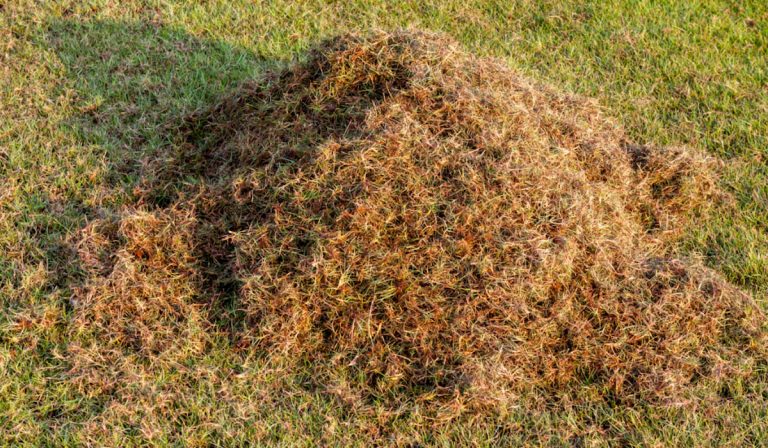Do Canna Lilies Spread?
Canna lilies are grown principally for their attractive foliage. Their foliage comes in a variety of colors, including bronze, shades of green, or variegated. When canna lilies are planted in shady areas, they do not produce many flowers. Their fabulous foliage, however, can fill an empty space.
Do canna lilies spread?
Yes, canna lilies spread, and they do so underground.

The large size of canna lilies may lead to overcrowding in mixed plantings. But this can be controlled by dividing the rhizomes occasionally. When canna lilies spread, they crowd out the other plants and prevent them from naturally regenerating. This can sometimes lead to invasion by other opportunistic, weedy species.
Apart from this, canna lilies can drain water from damp habitats.
We have more to share about the growth and spread of canna lilies. The subsequent paragraphs of this article will provide information on how fast canna lilies multiply. Herein, we also discuss how you can control or get rid of unwanted canna lilies.

Table of Contents
How Fast Do Canna Lilies Multiply?
Canna lilies are often referred to as bulbs, even though they are not actually bulbs. Canna lilies are not true lilies either – their root structures are more like those of irises.
Canna lilies multiply and spread underneath the soil from a fattened stalk extension known as a rhizome.
Just like the iris plant, the rhizomes of canna lilies multiply rapidly. People have reported getting as many as three times their initial number of cannas within a growing season.
Over time, as canna lilies multiply, they will choke out the older rhizomes at the center. Dividing the canna lilies every 3-5 years will ensure they grow in smaller and healthier clumps.
How to Stop Them From Spreading
Stopping canna lilies from spreading is necessary. Especially when they have been left in the ground over the winter in USDA zones 8-12.
In colder climates outside their preferred zones, you should dig up canna lilies every winter. You may then replant them in the spring to reduce overcrowding problems.
Here are some steps to help you control your canna lilies:
- When active growth has ceased in the fall, cut back the canna lilies a few inches above the soil. If you reside in frost-prone areas like USDA zone 8, allow the leaves to die from frost. This ensures the leaves transpire and photosynthesize as much energy as possible to the rhizome.
- Next, the exposed canna stems should be covered with around 4-12 inches of mulch to help insulate the rhizomes and soil. In warmer areas that do not receive frost, like USDA zone 10 and higher, as little as 4 inches of organic mulch will suffice. But depending on how severe the frost potential is in your area, you can use up to 12 inches.
- After the last frost in the early parts of spring, you can now dig out the rhizomes. Using a spade, dig a few inches into the soil outside the exposed plant stems. Ensure you dig up the rhizomes in one large clump or section.
- Remove any clinging soil on the dug-up clumps by shaking them. If need be, you can use a garden hose to spray the dirt off. This allows you to see the rhizomes clearly.
- Pull the rhizome clumps into several sections for easier inspection. Then search for growth points, or nodules, also referred to as eyes.
- Break each section of rhizomes into even small sections and ensure each section has a minimum of three eyes. If the rhizomes are difficult to break apart, use a sharp kitchen knife.
- Discard any rhizome section that looks rotten, small, or weak.
- Using nine parts water to one part chlorine, prepare a diluted bleach solution. Using this solution, clean the rhizomes to kill any diseases. After this, thoroughly rinse the rhizomes with tepid water.
- Now take each rhizome section and plant them 4 inches deep and 30 inches apart. This ensures the plant has enough room to mature. If there is not enough room in your original flower bed to provide the required spacing start a new one. You can discard excess rhizomes or plant them in 12-inch diameter pots.
You can also consider purchasing a flexible border that is designed to sink into the ground. Once in the ground, it surrounds the plants and prevents the tubers from spreading horizontally.
To use this method, dig a 6-inch trench around the flowers. Then put the borders in with their ends overlapping and cover with soil.
How to Get Rid of Unwanted Canna Lilies
If you feel your canna lilies are becoming invasive and you want to get rid of them for good, here are some suggestions to assist you:
Smother Them
If your canna lilies are in a dedicated flower bed, the easiest way to get rid of them is by smothering them. This method is best performed when the growing season has ended. Although you can still do it at any time.
To smother unwanted canna lilies, do the following:
- Cut off any foliage present at ground level.
- Then cover the canna lily area with newspaper with a thickness of at least 2-inches or landscape fabric.
- Cover the newspaper or landscape fabric with an organic mulch layer.
- Check the lilies regularly for any signs of new growth. If you notice any, remove them immediately at ground level.
Dig Them Out
If your canna lilies are crowded in a mixed border or bed, smothering them may not be ideal. Digging out the canna lilies from the ground is the only solution in such a situation.
Using a sharply pointed shovel, dig underneath the rhizomes. Ensure you pull the roots completely out of the ground.
The underground swollen stems or rhizomes are easy to spot and dig out during the growing season. Shake the excess soil off the dug rhizomes and expose them to full sunlight to dry out completely and die. If you leave any offshoots behind, they may start sprouting again.
Canna rhizomes thrive in moist and warm conditions like a compost pile. Ensure the rhizomes are completely dried out before you toss them into a landfill or compost. Care should especially be taken in mild winter regions where the rhizomes may sprout and become a nuisance once again.

Create an Unfavorable Growing Environment
To reduce sprouting by any remaining canna rhizome, create a soil environment unfavorable to canna lilies.
- Rake away any mulch that retains moisture above the rhizome.
- Do not provide compost, fertilizers, or other organic matter.
- You should also avoid watering the ground. This ensures the remaining plants are starved of nutrients.
- If digging is not an ideal option, cut any new canna foliage and growth off as they appear. Do this repeatedly, and the plants will eventually die.
Use Herbicides
The final option should be your last resort. Find an herbicide whose active ingredient is glyphosate and use it according to the instructions on the product’s label. Ensure you look out for an herbicide with glyphosate that is safe to use on flower beds.
However, if your canna lilies grow around streams, ponds, or lakes, an aquatic herbicide with glyphosate should be used.
Ensure you carefully read the label before using this method. Glyphosate herbicides are non-selective. This herbicide will usually kill any plant it is sprayed on.
Final Take
Canna lilies spread, and they do so rapidly. Unless you want to fill a large garden with only canna lilies, they need to be divided occasionally. When canna lilies become invasive, there are several methods to control or get rid of them. Decreasing soil fertility, drying the soil, applying herbicides, and digging rhizomes are some ways to rid your gardens of unwanted canna lilies.







